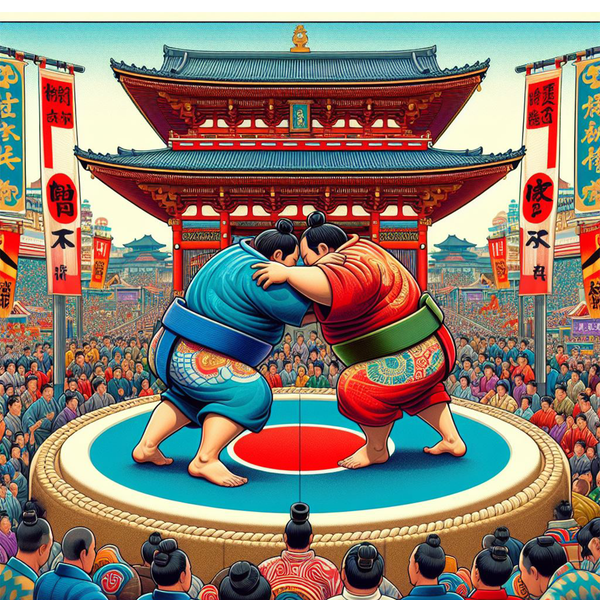Sumo, a sport steeped in tradition and ceremony, has held a central place in Japanese culture for centuries. Indeed, sumo tournaments, called “honbasho”, are spectacular events that attract thousands of local and international spectators. Thus, this article will delve into the fascinating world of sumo tournaments. It will explore their history, structure, rules of the game and cultural impact of this unique sport.
History of Sumo Tournaments
First of all, sumo has its roots in Shinto religious rituals in Japan. These ceremonies, designed to appease the spirits of the gods, gradually evolved after that into physical competitions. In the 17th century, sumo took a more organized form. In particular, with the establishment of strict rules and the creation of the first tournaments.
Sumo Tournaments Structure
Sumo tournaments are held six times a year in Japan, in Tokyo, Osaka, Nagoya and Fukuoka. Each tournament lasts 15 days, with a one-day break in the middle. These competitions, organized by the Japanese Sumo Association, are called “honbasho” and offer a unique experience to sumo fans.
Each tournament day is divided into two sessions. The first, in the morning, is devoted to the battles of the lower divisions. While the second, in the afternoon, features wrestlers from the higher division, Makuuchi. The fights take place in a circular ring called a “dohyo”, surrounded by a clay surface.
Wrestlers and their Ranks
Sumo wrestlers, called “rikishi”, are classified into different divisions based on their performance. Thus, the upper division, Makuuchi, is the most prestigious, and wrestlers reach ranks such as Yokozuna, Ōzeki, Sekiwake and Komusubi. Reaching the highest status of Yokozuna is a rare honor. It requires, above all, exceptional skills and consistency in performance.
Progression of a Battle during Sumo Tournaments
Sumo fights are fast-paced and intense, usually short-lived. In short, the objective is simple: push or knock your opponent out of the ring or make him touch the ground with a part of his body other than his feet. The rules may seem simple, but strategy and technique are crucial.
Each tournament day, wrestlers compete in a single-elimination tournament format. Wrestlers who win the majority of their bouts during the tournament earn promotions to higher divisions, while those who underperform may be demoted.
Ritualities and Traditions
Sumo is rich in rituals and traditions, from the ring entry ceremony to the pre-fight purification ritual. In addition, wrestlers wear traditional costumes, such as the “mawashi”, a thick belt, and perform symbolic gestures before each fight. These rituals add a spiritual and cultural dimension to the sport.
Cultural Impact
Sumo is much more than just a sport in Japan. It is deeply rooted in the national culture. In addition, it well illustrates the values of discipline, respect and perseverance. Thus, sumo wrestlers become public figures, and tournaments are passionately followed by millions of people across the country.
Conclusion
Sumo tournaments represent the very essence of Japanese culture, combining tradition, intense competition and centuries-old rituals. Fans of this unique sport are captivated by the raw strength, grace and strategic complexity of the fights. As a living cultural heritage, sumo continues to evolve while preserving its ancient roots. Making each tournament a celebration of Japanese heritage.



